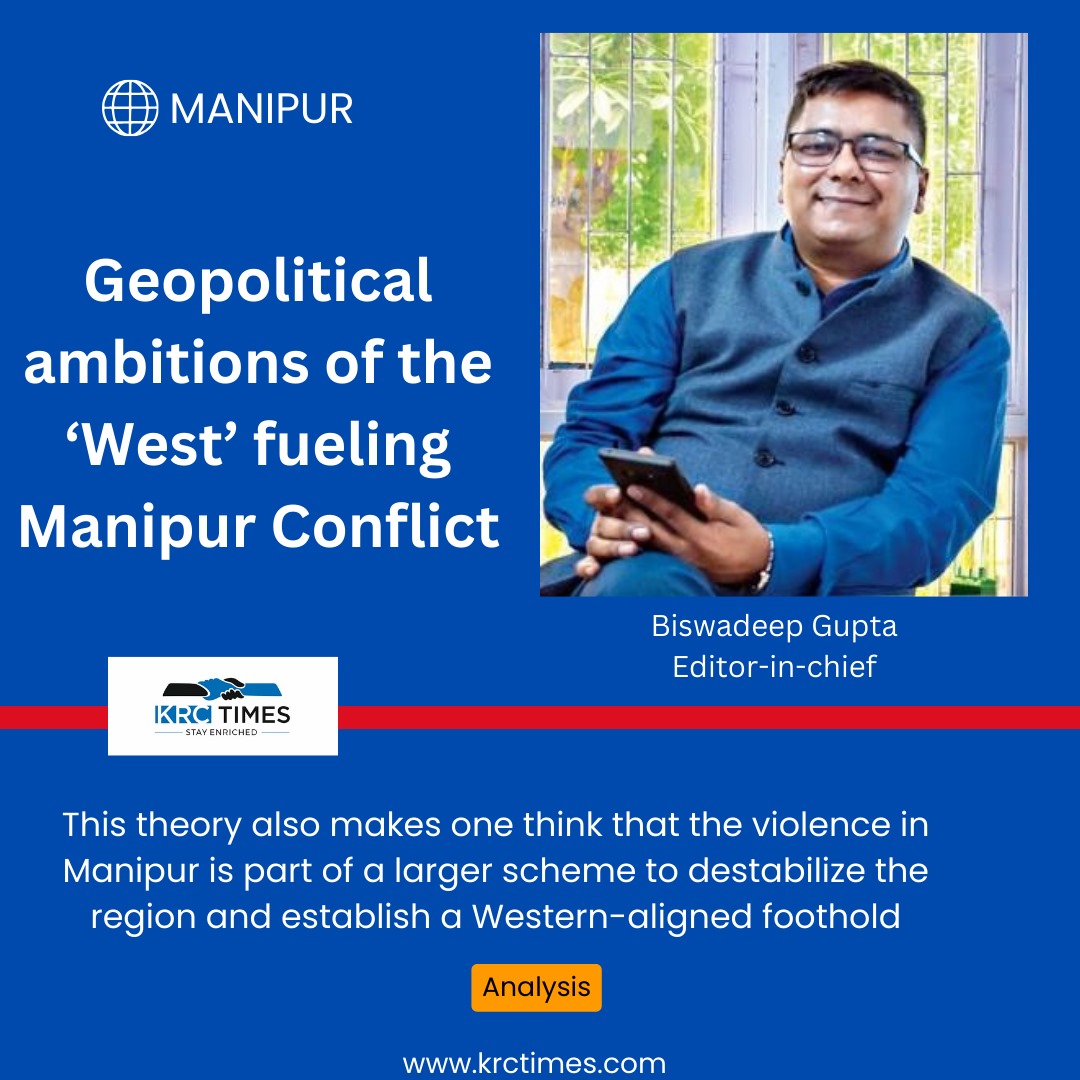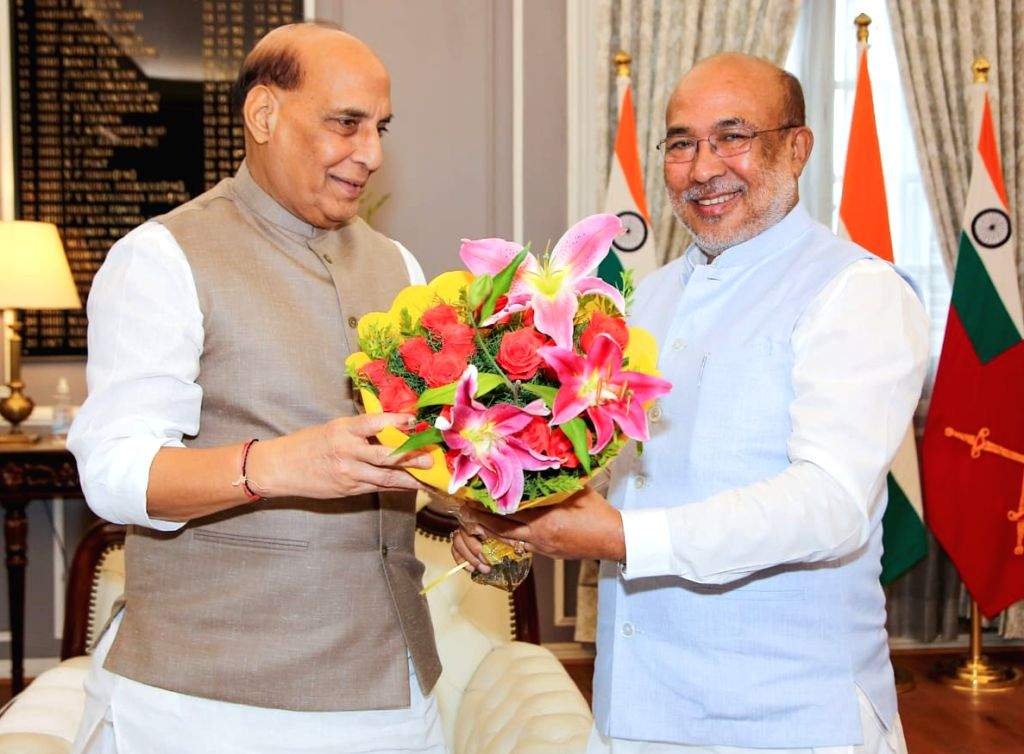This theory also makes one think that the violence in Manipur is part of a larger scheme to destabilize the region and establish a Western-aligned foothold
 Biswadeep Gupta
Biswadeep Gupta

Manipur conflict that took the shape of ethnic issues between the Meitei and Kuki-Chin-Zo (KCZ) communities as violence broke out with a peace rally in Churachandpur district on May 3, 2023, had deep-rooted consequences dividing the society at large. Homes and places of worship burned, families had to flee their homes, and violence continued for over a year and no reconciliation insight so far visible. Looking into the events, the ongoing standoff automatically raises an eyebrow and the question: What underlying forces are allowing this conflict to persist?
For the benefit of refreshing our minds, Manipur remains fragmented, with the Meitei community controlling the Imphal valley and the KCZ communities asserting dominance in the surrounding hills, particularly in Churachandpur, Kangpokpi, and parts of Tengnoupal districts. The buffer zone created as stretches of no-man’s land, monitored by central paramilitary forces, separates the two communities.
Coils of barbed wire, armoured vehicles, armed central paramilitary troopers, and sandbag bunkers define the checkpoints between Meitei-dominated Bishnupur and Kuki-dominated Churachandpur, as well as Meitei-controlled Imphal West and Kuki areas like Kangpokpi, creating an impression of boundaries between hostile nations.
Despite the military presence, local “village volunteers” also have taken up arms, reflecting a profound distrust in the state and central government’s ability to maintain peace. This distrust underscores a broader sentiment that the violence is not merely a local ethnic clash but may be influenced by larger geopolitical interests.
Manipur’s geographical location at the crossroads of South and Southeast Asia makes it a region of strategic importance. Historically, the state’s ethnic groups (more than thirty different communities ) – have coexisted despite periodic tensions. However, the recent escalation into open conflict has raised suspicions of external forces exploiting these ethnic divisions for broader geopolitical gains.
Salah Uddin Shoaib Choudhury, a Bangladeshi journalist and counterterrorism specialist, suggests that several Western nations, including the United States and Britain, are conspiring to create a Christian state by carving out territories from Bangladesh, Myanmar, and India.
This theory also makes one think that the violence in Manipur is part of a larger scheme to destabilize the region and establish a Western-aligned foothold.
Choudhury references Bangladeshi Prime Minister Sheikh Hasina’s remarks about foreign attempts to secure a military base in Bangladesh, hinting at broader Western ambitions in the region.
Although Hasina did not name the country involved, it is widely speculated that the United States has shown interest in establishing strategic bases in the Bay of Bengal.
In support of this grand scheme, Christian missionary publications often portray local ethnic conflicts as religious persecution. For instance, the ethnic violence in Manipur, which is rooted in complex tensions of population dynamics and land insecurity, has been framed by Western nations, including the US and Britain, as religious persecution of minority Christians (KCZ) by majority Hindus (Meiteis). The US-based NGO, the North American Manipur Tribal Association (NAMTA), has also criticized India, alleging violations of religious freedom. These narratives add a layer of international moral justification to their geopolitical ambitions.
Ironically, about 2 million Meiteis live in India and Myanmar, whereas the KCZ population is approximately 4 million.
The reality of the conflict in Manipur is multifaceted. The indigenous Meiteis face off against the trans-border KCZ community living in contiguous areas in Myanmar, Bangladesh, and India. The KCZ communities, including the Kuki National Army (KNA), have long sought an independent country. Leaders like P.S. Haokip, who claims the Kukis are not Indian but part of the lost tribes of Israel, illustrate the deep-seated identity politics fuelling the current unrest in Manipur.
National security experts argue that the Kuki-Chin National Front (KNF) operating in Myanmar, Bangladesh, and India, along with similar groups like the KNA are part of a broader plan to establish an independent ‘Christian’ country. If successful, this new country would provide Western powers, particularly the United States and Britain, with a strategic base in a volatile region. Such a development poses a significant threat to the national security of Bangladesh, Myanmar, and India, necessitating a collaborative approach to counter these efforts.
The unresolved violence in Manipur is not merely a local ethnic conflict but potentially part of a larger geopolitical strategy. The alleged involvement of Western nations in supporting separatist movements to establish a strategic foothold in South Asia underscores the need for a deeper understanding of the region’s complexities.
Addressing the root causes of the conflict and recognizing the broader geopolitical manoeuvring are crucial for fostering lasting peace and stability in Manipur and beyond.
Ethnic violence in Manipur is a complex issue with deep historical roots and significant contemporary implications. The involvement of external forces, particularly Western nations with strategic interests, adds another layer of complexity to the situation.
Understanding the interplay of local ethnic tensions and broader geopolitical strategies is essential to addressing the conflict effectively. Collaborative efforts between India, Bangladesh, and Myanmar, coupled with a comprehensive approach to regional stability, are necessary to counter the potential threats these geopolitical manoeuvres pose and achieve lasting peace in Manipur.

(The author is a journalist based in North East India who covered the Manipur conflict very closely. He is also associated with various social organisations, journalistic outlets and art and culture movements across the BIMSTEC region)
Promotional | Subscribe KRC TIMES e-copy






